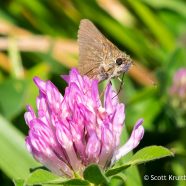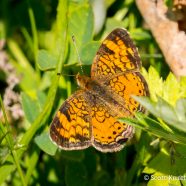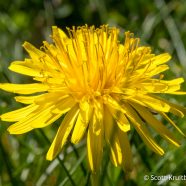RTPI will host Lawn of the Dead! Landscape Design Workshop October 26th
(RTPI) invites you to Lawn of the Dead! on Friday, October 26th, from 10:00am – 2:00pm. It has been said that if you compared the average American lawn to a desert, the desert would win easily with much greater life and species diversity. Keeping up a lawn is both a chore for you and harmful to all flora and fauna in the area. This special landscape design workshop will help you learn how to make your yard a haven for native and migrating wildlife. You will discover how your landscape choices as a homeowner can improve the health of our communities and provide essential pollinator...
Read MoreSwarthy Skipper
The Swarthy Skipper (Nastra lherminier) is a very small and mostly nondescript butterfly. These photos are of an individual earlier this spring in full sunlight. The tiny butterfly has some wear on it and is a bit faded. Their upperwings are a darker brown with underwing a light brown or yellow with some lighter edges and white veins. You can see it here feeding on a red clover flower, and it is even smaller! These nectar sources are common for the species as they will stay low in the grass in short or cut areas only adding to their inconspicuousness. As of today the only place we know they...
Read MorePearl Crescent
Here is a Pearl Crescent (Phyciodes tharos) butterfly as photographed in the grass last week – the insects are coming!
Read MoreCabbage White
The Cabbage White (Pieris rapae) is a non-native “pest” butterfly species, and here you can see it is feeding on a Dandelion (Taraxacum officinale), a non-native weed…but you know what, the ship has sailed on trying to solve that problem. I realize that is easy for me to say because I am not employed in agriculture. However, we are not going to wake up tomorrow and eliminate these species from North America. Even if we were to try it would be terribly harmful, and in the case of the dandelion we would be pumping even more toxic chemicals into our environment – as...
Read MoreDandelion Feast
The dandelion is one of the most widespread and widely known flowering plants there is, and while they may not be the best for agriculture or maintaining the “perfect” manicured lawn, they are very helpful for our early pollinators. Undoubtedly you have seen bees, butterflies and other flying insects feeding on them when there is little else blooming. Here’s to them! Besides, they’re pretty little things once you stop thinking about making the grass look “neat” and “tidy”. Scott Kruitbosch Conservation & Outreach...
Read More








